In a world where fast-paced lifestyles and constant digital distractions can leave you feeling overwhelmed and exhausted, many people are turning to a gentle, introspective form of yoga known as Yin Yoga. This practice, which emphasizes stillness, deep stretching, and long-held poses, is rapidly gaining popularity for its remarkable ability to relieve stress and restore balance to both body and mind. In this comprehensive guide, we’ll explore everything you need to know about Yin Yoga—from its origins and benefits to practical tips for beginners and real-life transformation stories. Whether you’re looking to unwind after a hectic day or seeking a new way to connect with yourself, Yin Yoga might be the mindful escape you’ve been waiting for.
What Is Yin Yoga?
Yin Yoga is a slow-paced style of yoga where poses, or asanas, are held for extended periods—typically between one to five minutes or even longer. Unlike more dynamic forms of yoga, which focus on building strength and endurance through movement (often referred to as “yang” practices), Yin Yoga targets the deeper connective tissues, such as the fascia, ligaments, and joints. This practice is designed to open up these tissues, increase circulation, and improve flexibility while encouraging a meditative state of mind.
The Philosophy Behind Yin Yoga
At its core, Yin Yoga is rooted in traditional Chinese medicine and Taoist philosophy. It’s built on the idea that the body has both yang (active) and yin (passive) energies, and that true balance can only be achieved when both are nurtured. While yang practices (like Vinyasa or Ashtanga) are dynamic and muscular, Yin Yoga is all about surrendering to the moment, releasing tension, and allowing the body to go deeper into each stretch. The practice encourages mindfulness and introspection, making it a powerful tool for stress relief and emotional healing.
How Yin Yoga Differs From Other Styles
- Slow-Paced Movement: In Yin Yoga, each pose is held for several minutes. This slow pace contrasts sharply with more vigorous styles of yoga.
- Focus on Connective Tissue: Instead of primarily strengthening muscles, Yin Yoga targets the deeper layers of your body—improving joint mobility and flexibility.
- Meditative Approach: Yin Yoga incorporates mindfulness and breathing techniques to help calm the mind, making it not only a physical practice but also a form of moving meditation.
The Origins and Evolution of Yin Yoga
Although Yin Yoga has become a modern trend, its roots can be traced back to ancient Eastern philosophies and practices. The tradition draws on ideas from Taoism, where the balance of yin and yang is central to understanding the flow of life and energy.
Ancient Influences
The concept of balancing yin and yang dates back thousands of years in Chinese medicine and philosophy. Traditional practices focused on how energy flows through the body via meridians (similar to the chakras in Indian traditions) and sought to achieve harmony between opposing forces. Yin Yoga takes these ancient ideas and applies them to the physical body, offering a means to access and nurture the more passive, restorative aspects of our energy system.
Modern Adaptation
In the late 20th century, yoga instructors began to recognize the need for a slower, more introspective style of yoga that could complement the more vigorous, fitness-oriented practices. Pioneers like Paul Grilley and Sarah Powers helped shape modern Yin Yoga, drawing inspiration from both traditional Chinese medicine and their own personal experiences. Today, Yin Yoga is widely taught in studios and online classes around the globe, celebrated for its ability to ease physical and mental tension.
The Transformative Benefits of Yin Yoga
The slow, deliberate practice of Yin Yoga offers a wide range of benefits that appeal to both the body and mind. Whether you’re a seasoned yoga practitioner or new to the discipline, here’s what you can expect:
Physical Benefits
- Enhanced Flexibility and Joint Mobility:
Yin Yoga’s long-held poses gently stretch and stress the connective tissues around your joints, leading to improved flexibility and greater range of motion over time. - Improved Circulation and Energy Flow:
By stimulating the meridian pathways (or energy channels) in the body, Yin Yoga can help increase blood circulation, promoting better energy flow and aiding in the removal of toxins. - Reduced Muscle Tension:
The focus on slow, mindful release in Yin Yoga helps reduce chronic muscle tension and stiffness, which can be particularly beneficial if you spend long hours sitting at a desk or engaging in repetitive activities. - Injury Prevention and Recovery:
Yin Yoga’s low-impact nature makes it an excellent complement to more vigorous activities. It can help rehabilitate overused muscles and joints while preventing injuries by maintaining healthy connective tissue. - Improved Posture:
Regular practice of Yin Yoga encourages body awareness and alignment, helping you develop better posture and relieve the physical stress that can accumulate from daily activities.
Mental and Emotional Benefits
- Deep Stress Relief:
The meditative aspects of Yin Yoga, combined with its slow pace, help activate the parasympathetic nervous system (often called the “rest and digest” system). This shift can significantly reduce stress and anxiety levels. - Enhanced Mindfulness:
As you hold each pose, you’re encouraged to focus on your breath and bodily sensations. This mindfulness practice can extend beyond the mat, helping you stay present and engaged in daily life. - Emotional Release:
Many practitioners find that Yin Yoga creates a safe space for processing emotions. The extended hold in each posture can facilitate a release of pent-up feelings, leading to emotional healing and greater inner peace. - Improved Sleep Quality:
By reducing stress and calming the mind, Yin Yoga can contribute to better sleep patterns and overall relaxation, making it an ideal practice before bedtime. - Heightened Body Awareness:
Yin Yoga invites you to listen to your body in a profound way. This increased awareness can help you recognize stress points and develop a deeper connection to your physical and emotional self.
Holistic Benefits
- Enhanced Mind-Body Connection:
Yin Yoga bridges the gap between physical movement and inner stillness, helping you cultivate a strong, harmonious relationship between your body and mind. - Spiritual Growth:
Although not exclusively a spiritual practice, Yin Yoga often leads practitioners to explore deeper aspects of themselves, fostering a sense of inner growth and self-discovery. - Complementary to Other Practices:
Yin Yoga pairs well with more dynamic yoga styles and other forms of exercise. It can serve as a counterbalance, helping to prevent burnout and maintain overall well-being.
The Science Behind the Slow Stretch
The benefits of Yin Yoga are supported not only by ancient wisdom but also by modern scientific research. Here’s how the slow, passive stretching involved in Yin Yoga contributes to physical and mental health:
Connective Tissue and Fascia
Connective tissues such as ligaments, tendons, and fascia make up a significant portion of our bodies. Unlike muscles, these tissues are not designed for rapid movement; they require slow, sustained pressure to release tightness and improve elasticity. Yin Yoga’s long-held poses gently work on these deeper layers, helping to break down adhesions and increase suppleness over time.
Nervous System Regulation
The slow, meditative nature of Yin Yoga helps shift the body from a state of stress (sympathetic nervous system activation) to one of relaxation (parasympathetic nervous system activation). This change is linked to reduced cortisol levels (the body’s stress hormone), lower blood pressure, and a general sense of calm.
Mindfulness and Brain Function
Practicing Yin Yoga can also affect the brain. Studies have shown that mindfulness practices help improve concentration, reduce anxiety, and even change the brain’s structure in positive ways. By focusing on the breath and bodily sensations during each pose, you train your brain to remain present and less reactive to stress.
What to Expect in a Yin Yoga Class
If you’re new to Yin Yoga, you might wonder what a typical class looks like. Here’s a step-by-step overview of a Yin Yoga session:
1. Arrival and Setting the Tone
Most Yin Yoga classes begin in a quiet, calm environment—often with soft lighting, gentle music, and a serene ambiance. You’ll be encouraged to arrive a few minutes early to settle in, remove distractions, and set an intention for your practice.
2. Gentle Warm-Up
Although Yin Yoga is primarily about stillness, a brief warm-up helps prepare your body for deeper stretches. You might start with some gentle movements or a short meditation to release initial tension and tune into your breath.
3. Transition Into Long-Held Poses
During the main part of the class, you will move into a series of seated or lying postures that are held for several minutes at a time. Common Yin Yoga poses include:
- Butterfly Pose: Sitting with the soles of your feet together and gently leaning forward to stretch the hips and lower back.
- Child’s Pose: A restorative posture that relaxes the spine and calms the mind.
- Dragon Pose: A deep lunge variation that targets the hip flexors and groin.
- Sphinx Pose: A gentle backbend that opens the chest and improves spinal alignment.
- Reclining Twist: A gentle twist that massages the abdominal organs and relieves lower back tension.
During these poses, you’re encouraged to relax deeply into the stretch and allow your body to release without forcing it.
4. Embracing Stillness and Mindfulness
As you hold each pose, the goal is to remain as still and mindful as possible. Focus on your breath—notice the sensation of inhaling and exhaling slowly. If your mind wanders, gently guide it back to the present moment. This practice of mindfulness is central to the benefits of Yin Yoga.
5. Cooling Down and Reflection
After the series of long-held poses, the class usually transitions into a cool-down phase. This might include gentle stretches, a final resting pose (often Savasana), and a brief meditation or guided relaxation. The cool-down allows your body to integrate the benefits of the practice, and it provides a time for quiet reflection.
6. Post-Class Integration
Many practitioners find value in taking a few moments after class to journal or simply sit in silence. This time helps solidify the physical and mental shifts you’ve experienced and sets a positive tone for the rest of your day.
Practical Tips for Beginners
Starting a new practice can sometimes feel intimidating, but Yin Yoga is designed to be accessible and gentle—even for complete beginners. Here are some tips to help you get the most out of your practice:
- Dress Comfortably:
Choose loose, comfortable clothing that allows for easy movement and deep stretching. Since you’ll be holding poses for several minutes, it’s important to feel at ease in your attire. - Use Props if Needed:
Don’t be afraid to use yoga blocks, bolsters, or blankets to support your body and make poses more comfortable. Props can help you find a deeper, yet safer stretch. - Set Realistic Expectations:
Remember that Yin Yoga is not about achieving perfection in every pose. Instead, it’s about listening to your body, releasing tension, and cultivating a sense of inner calm. - Start with Shorter Holds:
If holding a pose for several minutes feels too challenging at first, start with shorter durations and gradually increase the time as you become more comfortable. - Focus on Your Breath:
Your breath is a powerful tool in Yin Yoga. Use deep, mindful breathing to help you relax into each pose and to quiet your mind. - Embrace the Stillness:
The true magic of Yin Yoga lies in its meditative quality. Allow yourself to sink into the stillness and notice the sensations in your body without judgment. - Practice Regularly:
Consistency is key. Even a short Yin Yoga practice a few times a week can lead to profound changes in your physical and mental well-being over time.
Overcoming Common Challenges in Yin Yoga
Like any form of yoga, Yin Yoga can present its own set of challenges. Being aware of these obstacles and knowing how to address them can help you stay committed to your practice.
Dealing with Discomfort
Since Yin Yoga involves holding stretches for extended periods, it’s natural to experience discomfort. Learn to differentiate between discomfort and pain. If a pose feels too intense, use a prop or ease out slightly until you find a comfortable balance.
Quieting the Mind
Many beginners find that their minds wander during long holds. Rather than fighting these thoughts, gently bring your focus back to your breath or the sensations in your body. Over time, this practice will help cultivate a more mindful, present state of awareness.
Patience with Progress
Yin Yoga is a slow practice, and improvements in flexibility and mental clarity often happen gradually. Be patient with yourself and celebrate small milestones along the way.
Real-Life Transformation Stories
Many people have experienced profound changes in their lives through the practice of Yin Yoga. Here are a few inspiring stories from practitioners who have found solace and strength in this gentle art:
Laura’s Journey to Stress Relief
Laura, a busy marketing executive, turned to Yin Yoga as a way to cope with the relentless pressure of her job. “I was constantly anxious and my body felt like it was in a perpetual state of tension,” she recalls. “After a few weeks of attending Yin Yoga classes, I noticed a significant reduction in my stress levels. The slow, meditative pace allowed me to finally disconnect from the chaos and find a sense of inner calm. It’s become my sanctuary.”
Carlos’ Path to Physical Healing
Carlos, an avid runner who suffered from recurring injuries, discovered Yin Yoga as a way to support his recovery. “I was skeptical at first because I’m used to more dynamic workouts,” he says. “But Yin Yoga taught me to listen to my body and address the tightness in my muscles and joints. The long holds helped improve my flexibility and reduce my risk of injury. Now, I incorporate Yin sessions into my routine regularly, and it’s made a world of difference.”
Nina’s Emotional Breakthrough
Nina, a graphic designer and lifelong perfectionist, found that Yin Yoga opened up a space for emotional release. “I always felt like I had to be on the go, constantly achieving and doing,” she shares. “Yin Yoga forced me to slow down and be present with my emotions. It was challenging at first, but as I learned to sit with the discomfort, I began to let go of long-held stress and anxiety. It has been a transformative experience for my mental health.”
Frequently Asked Questions (FAQs)
Q1: What exactly is Yin Yoga?
A: Yin Yoga is a slow-paced form of yoga where poses are held for several minutes to target deep connective tissues, increase flexibility, and promote a meditative state. It focuses on stillness and mindfulness rather than dynamic movement.
Q2: Who can practice Yin Yoga?
A: Yin Yoga is accessible to everyone, regardless of age or fitness level. It’s especially beneficial for those looking to reduce stress, improve flexibility, and enhance mindfulness. Beginners are encouraged to start with shorter holds and use props as needed.
Q3: How often should I practice Yin Yoga to see results?
A: Consistent practice is key. Even practicing Yin Yoga two to three times a week for 20–30 minutes can lead to noticeable improvements in physical and mental well-being over time.
Q4: Is Yin Yoga effective for stress relief?
A: Yes, the slow pace, deep stretching, and meditative focus of Yin Yoga help activate the parasympathetic nervous system, reducing stress and promoting relaxation.
Q5: Do I need any special equipment for Yin Yoga?
A: While a yoga mat is essential, many practitioners also use props like blocks, bolsters, and blankets to support deeper stretches and enhance comfort during long holds.
Q6: How is Yin Yoga different from other types of yoga?
A: Unlike more dynamic and fast-paced yoga styles that build strength and cardiovascular endurance, Yin Yoga is all about relaxation, deep stretching, and mindfulness. It targets the body’s connective tissues rather than just the muscles.
Q7: Can Yin Yoga help with back pain?
A: Many practitioners find that Yin Yoga’s gentle, sustained stretches relieve tension in the back and improve flexibility, which can help alleviate chronic pain. However, it’s always advisable to consult with a healthcare provider if you have severe or persistent issues.
Q8: What should I expect during a Yin Yoga class?
A: In a typical Yin Yoga class, you’ll start with a gentle warm-up, move into a series of long-held poses (often seated or lying down), and finish with a cool-down and meditation. The focus is on deep breathing, mindfulness, and slowly releasing tension.
Q9: How do I know if I’m doing a pose correctly?
A: Yin Yoga is less about perfection and more about finding what feels right for your body. Listen to your body and use props to modify poses. Instructors provide guidance and encourage you to focus on the sensation rather than the form.
Q10: Can Yin Yoga be combined with other forms of exercise?
A: Absolutely. Yin Yoga complements more dynamic practices by helping to release tension and improve flexibility, making it a great addition to any fitness regimen.
Conclusion
Yin Yoga offers a transformative escape from the hectic pace of modern life. By inviting you to slow down, breathe deeply, and hold poses that stretch not only your muscles but also your mind, Yin Yoga provides a sanctuary of calm in the midst of chaos. Its emphasis on stillness and mindfulness helps relieve stress, improve flexibility, and create a deep mind-body connection that many practitioners find life-changing.
Whether you’re new to yoga or a seasoned practitioner seeking a counterbalance to a vigorous workout routine, Yin Yoga’s gentle, meditative practice can help you find balance, restore inner peace, and nurture your overall well-being. The long-held poses may seem challenging at first, but they offer a unique opportunity to explore the sensations of deep relaxation, emotional release, and mindful awareness.
As more and more people discover the benefits of this slow, thoughtful practice, Yin Yoga is quickly becoming a viral phenomenon—not just for its physical advantages, but for its profound impact on mental and emotional health. By embracing Yin Yoga, you’re not just stretching your body; you’re also stretching your capacity for patience, acceptance, and self-compassion.
So, if you’re ready to slow down, breathe deeply, and let go of the constant rush of everyday life, consider stepping onto the mat for a Yin Yoga session. Allow yourself the time and space to be still, to listen to your inner voice, and to discover the gentle power of letting go. With each breath and every long-held pose, you may just find the stress relief and inner balance you’ve been searching for.
May your journey with Yin Yoga bring you tranquility, flexibility, and a renewed sense of connection to your inner self. Embrace the slow pace, enjoy the quiet moments, and let the gentle practice of Yin Yoga transform your life from the inside out.




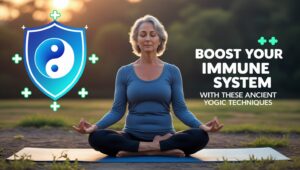
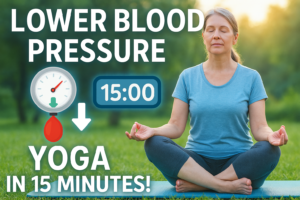
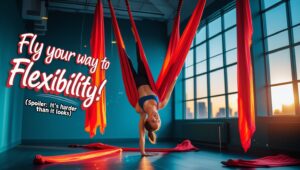
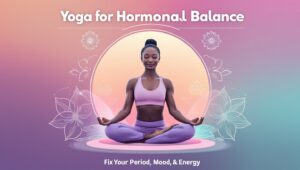
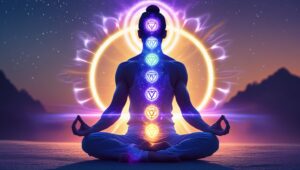
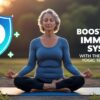




Add comment